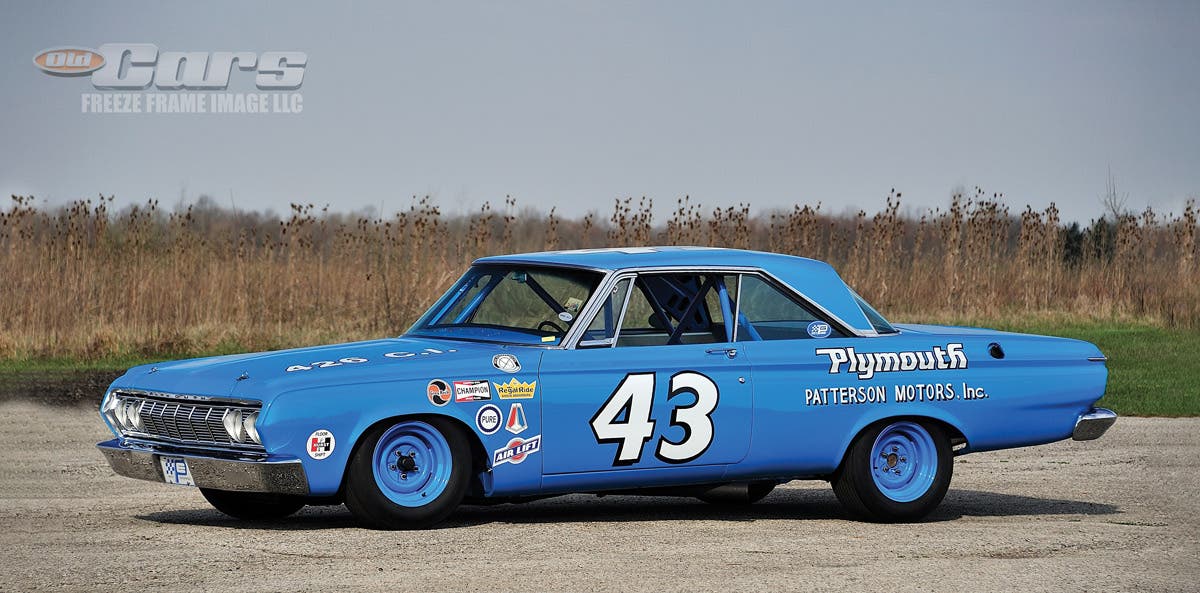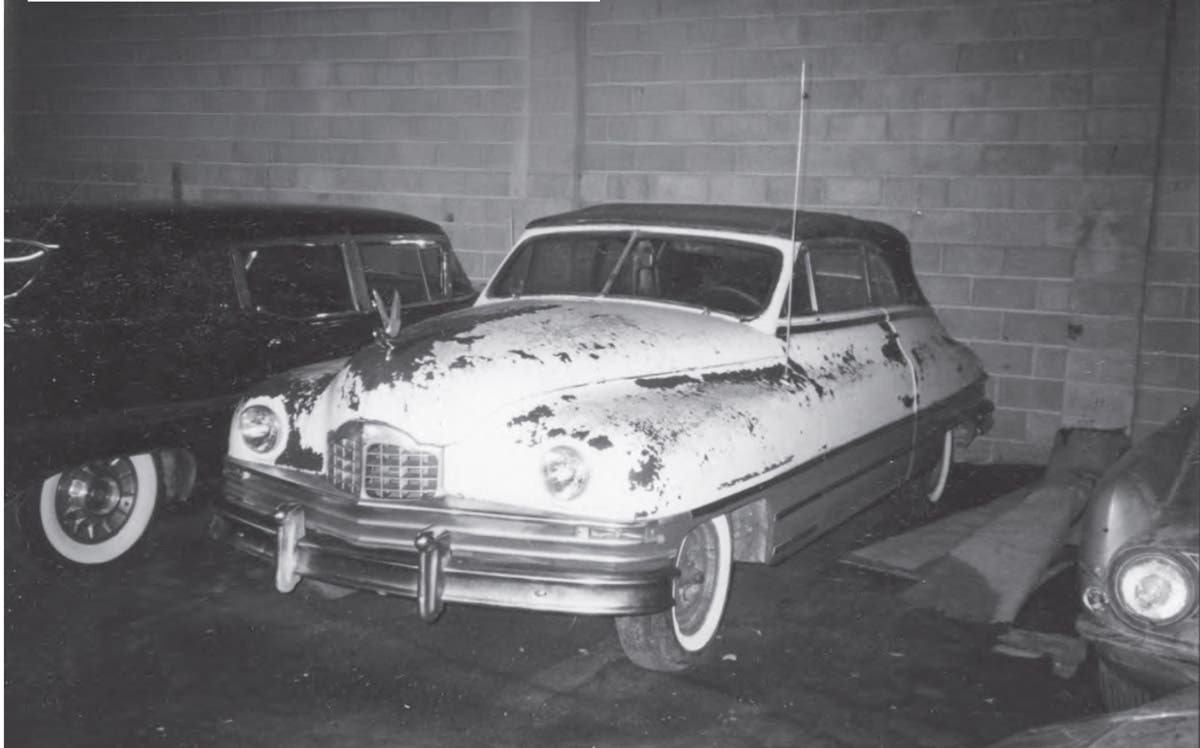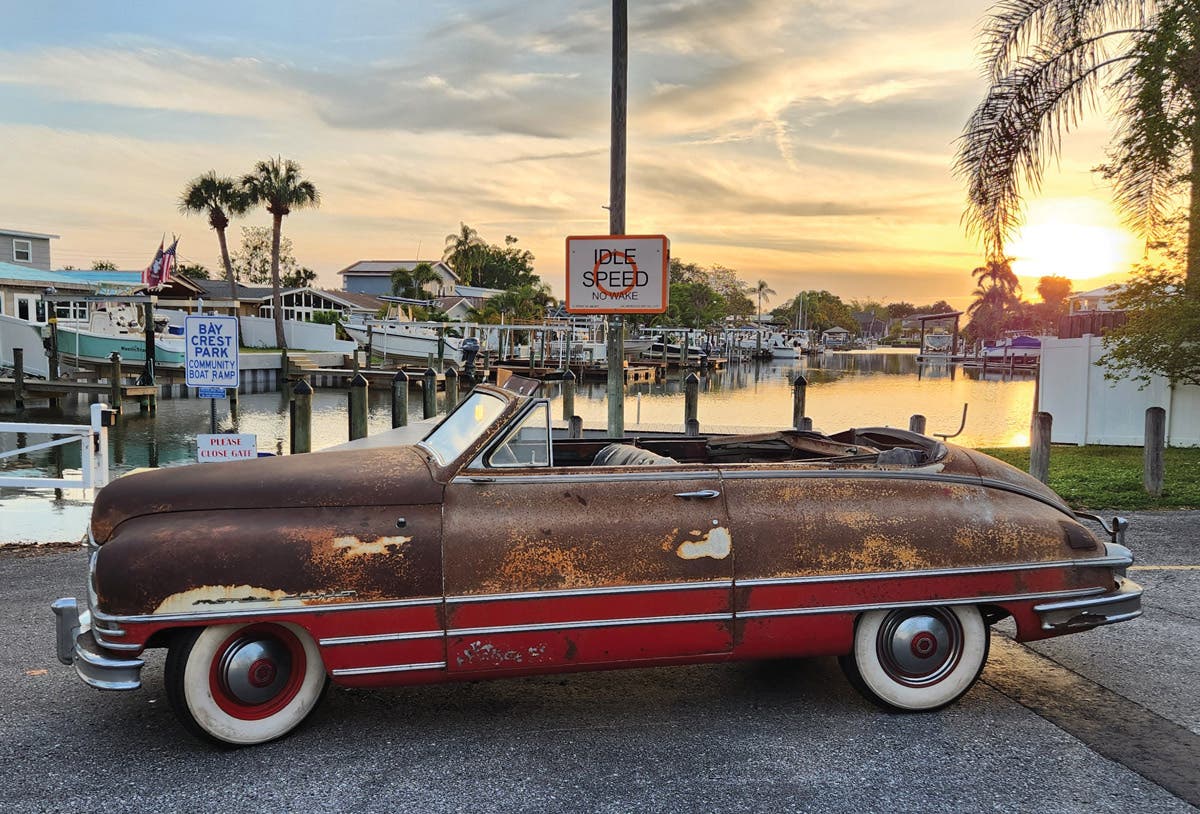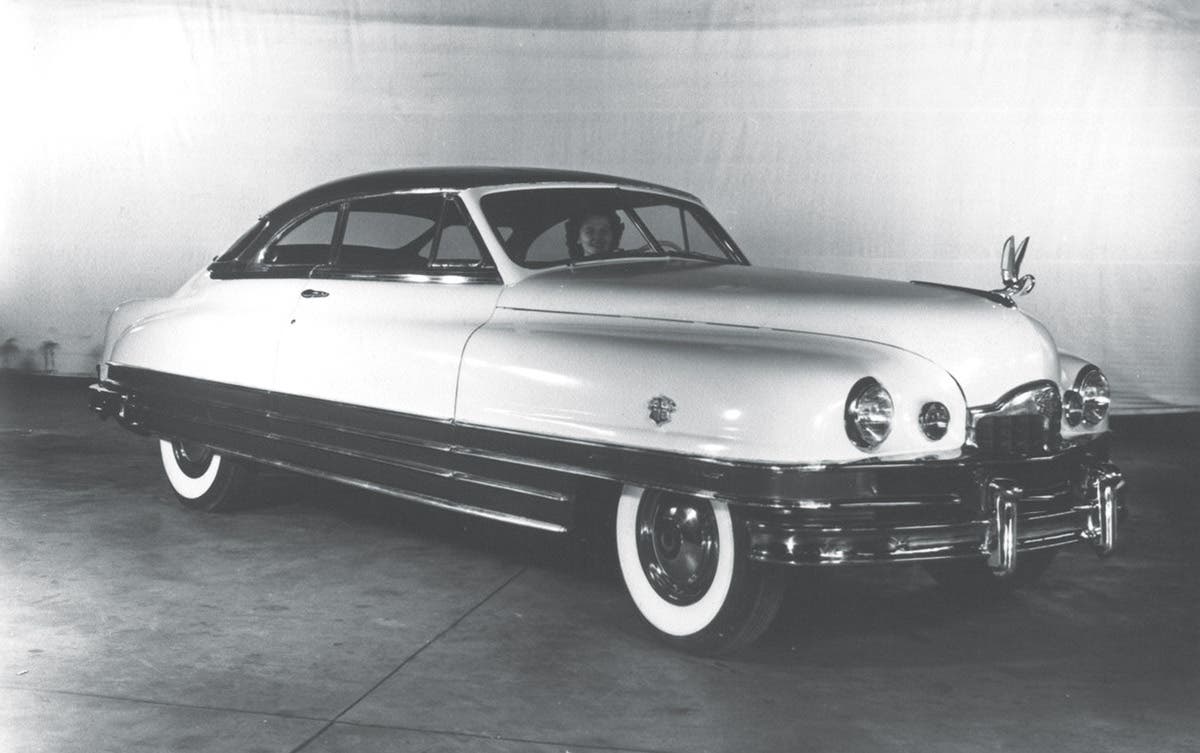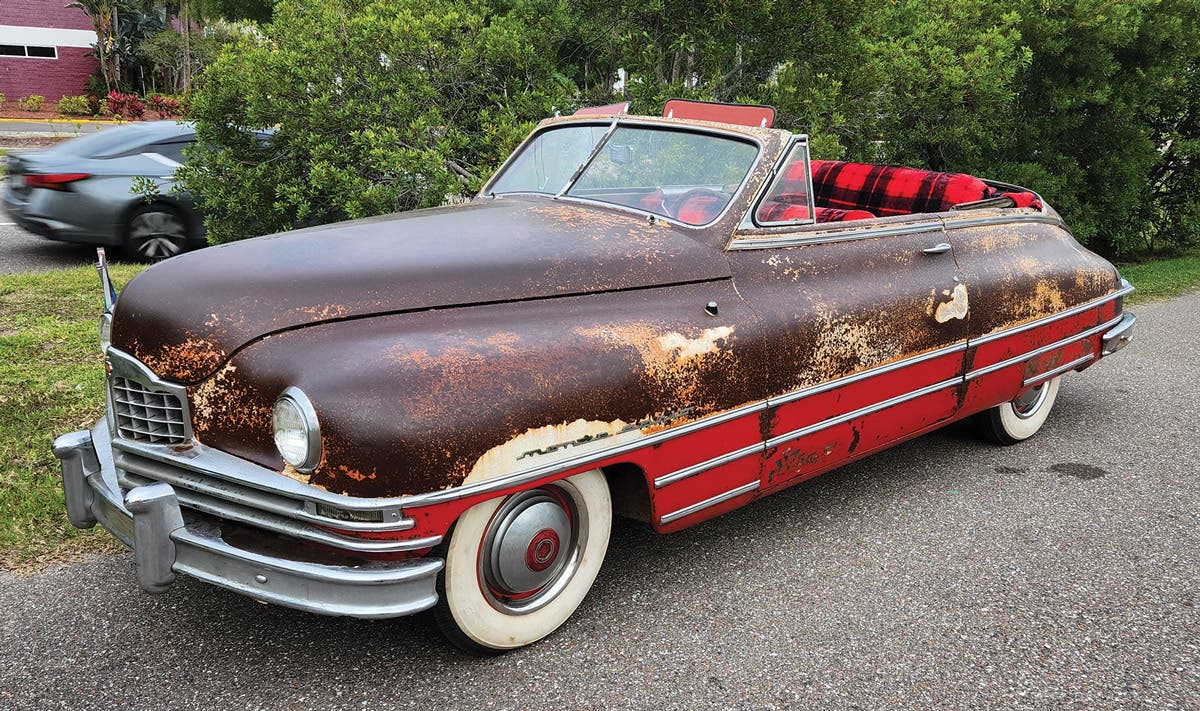Car of the Week: 1960 Plymouth Savoy
This 1960 Plymouth Savoy is a humble, all-original MoPar that refuses to show its age.
Kevin English was pretty sure he wanted a car from 1960. That was the year he was born, and he wanted a car to match him in age.
He really wasn’t sure what he wanted, but he darn sure wasn’t planning on winding up with a huge, almost completely original, bare- bones, six-cylinder Plymouth sedan. Even with its “Forward Look” MoPar styling, this Plymouth was the plainest of “Plain Janes” — not the car most guys dream about. But English just know the car was too unique, and too original, to pass up. Especially for a paltry asking price of just $3,600!
“I read some stuff from back in 1959 when they rolled it out, some automotive commentators said it ‘looked like a whale sucking a lemon’” he laughs. “I think that was pretty appropriate. They were kind of rejected, the styling, in their day, but man they are sought-after today. People warmed up to them. It only took 60 years, but people really warmed up to the designs.”
English’s humble Desert Beige sedan had less than 70,000 miles on the odometer when he found it in 2015, with the vast majority probably coming in the car’s first 10 years of life. An oil change sticker in the door jamb shows it was serviced in 1980 with 57,000 miles and before that had been in for an oil change in 1973 at just 51,000. Both of those appointments would have been made by the original owner in New Castle, Pa., not far from where the Savoy was originally purchased in Pittsburgh.
The original owner sold the car in 1988 after hanging onto it for 28 years. The next owner had it for 27 years, but drove it even less than the first owner.
“I saw it [in a classified ad] and the son of the man who owned it was storing it and wanted to get rid of it,” English said. “It was in a storage place and so he just got tired of having to pay the storage on it, and he just wanted to save some money and get rid of it, and I was happy to take it, and I just want to keep it as original as possible… I had them send me pictures, I wanted to see inside the door jambs and along the bodylines and stuff, and he took pictures that showed the original oil change stickers and all that. So I knew it was an original car, and I bought it sight-unseen.
“He was asking $4,200 and I talked him down to $3,600 [laughs]. There are some affordable classics out there, you just gotta find ’em.”
English was pretty confident from the photos he had seen that the car was very original. He didn’t realize how quite pristine until it actually showed up in his driveway.
“I knew by the pictures of the interior and the manuals and advertisements of the day, I knew it was all correct,” he says. “The interior is all original still, the rubber mats and everything. It didn’t have carpeting in it … The driver’s side obviously has the most wear, but it looks like he never took anybody with him because only the driver’s side has any wear on it. Even the brake pedals and stuff don’t have any wear on them. And it’s the original spare in the trunk — let’s hope I don’t have to use it!”
WORKING MAN’S PLYMOUTH
The Savoy lineup was in its sixth year with Plymouth when the 1960 model year dawned. The nameplate had actually been used from 1951-53 on station wagons, but was applied to full-sized Plymouths from 1954-61, and then again to downsized models from 1962-64.
All 1960 Plymouths had a few common major styling changes. Most obvious was a new grille of closed-spaced horizontal blades, accented with thin, vertical division bars. The front fenders had a wing-like look, with feature lines wrapping around the body corners to the front wheel openings, creating a sort of a cove just ahead of the wheel fender treatment. Side trim moldings were rearranged and “shark fin” rear fender panels appeared. The Savoy was the low-priced line in the regular market, but economy level “Fleet Special” editions were provided for commercial customers. Standard equipment for the Savoy and the Deluxe Suburbans included: oil filter, turn signals, dual sun visors, and the tubeless blackwall tires. Single sun visors and other deletions characterized the Fleet Specials. Savoys had no model nameplates, straight side trim moldings from the front door back to the tail tips and single “Jet Age” missile medallions on the rear fins. Uni-body construction was used, Safety-Guard door latches and asymmetrical rear leaf springs were new technical innovations for the 1960 models. So was the new “30-D Economy Six,” 225-cid/145-hp engine, which quickly became known as the “Slant Six” thanks to its 30-degree incline that was supposed by make the car ride and handle better, and be easier to maintain.
Fleet Specials were about $300 cheaper than the Deluxe models and both included two and four-door sedans. The Surburban lineup in the same line included two-and four-door station wagons.
The base price for a six-cylinder four-door Deluxe sedan like English’s car was $2,275. Another $120 would have gotten you a V-8. On the options list, Plymouth also offered at 318 small-block V-8, a wedge-head 361 and a new 383 with 330 hp.
Four-door Deluxe sedans were by far the most popular style of Savoy for 1960, with 51,384 built. They were second behind only the Valiant four-door sedan (106,515) in the entire Plymouth lineup
A STELLAR SURVIVOR
English says he had an affinity for Chrysler products long before he landed his pristine Savoy.
“I’ve always been interested in MoPars. My grandparents had MoPars back in the ‘30s and ’40s. I had a ’39 Plymouth and I had a ’41 Desoto 3-window coupe. I had a ’41 Chrysler Royal and ’60 Chrysler. But this is probably the one I’m just going to hang onto.”
Despite living most of its life in Pennsylvania, English is pretty convinced his big Plymouth rarely came out of the garage on a snowy day. MoPars from the era were notorious for their rust problems, but his Savoy somehow defied the odds. He found a couple of spots on the body he suspects were touched up with paint, but he found no traces of rust anywhere on the sheet metal, or underneath the car.
“I’d say it has at least 90 percent of its original paint, so it’s holding up pretty well for its age. No rust! They said they were built solid in 1960 because they were doing all this undercoat to try to get away from their image, which was a bad image, in ’57-58. They still rusted out, but if you didn’t drive it in the snow or the rain very much, you could kind of get lucky, and this car obviously didn’t see the light of day very often.
“At some point it probably did sit for a long time. Probably with the first owner, when he got older and then between him and second owner, he didn’t put many miles on it either, based on the oil changes.”
The Savoy ran and drove when English acquired it back in 2015. Since then, aside from needing new tires, he says only one problem has ever arisen.
“I ended up having to do the brakes. That was the only thing I had to do,” he says. “One was locking up, and we went in and looked at it they found a lot of original parts still in there [laughs]. Other than that, all I’ve really done is put the bias-ply tires on it. These are copies of the original tires. They didn’t have blackwalls, and this would have had blackwalls originally. I haven’t had any issues other than that. It starts every time and drives as straight as an arrow, unless you get on a freeway and these bias-plys catch everything [laughs] … It’s pretty stable, but you just have to pay attention.”
English was able to acquire a copy of the Savoy’s original build sheet from Chrysler Historical. It showed the dash pad was added at the factory, as was the hood pad and undercoating. The two trim pieces just ahead of the rear wheel openings were also optional.
English and his big four-door have appeared regularly at shows around Wisconsin and the Midwest in recent years, including the Iola Car Show, where it was right at home with flashier machines in the Blue Ribbon area of invited cars. Not everybody takes notice of it, but English says MoPar fans are usually impressed when they see it. Judges are often impressed, too — the car has collected its share of hardware, including first place in the Survivor class at the Geneva Concours in Illinois.
“It’s an affordable classic, and it’s something people go ‘Wow, what is it?’” he says. “A lot of people ask me what it is because other than on the front and on the very back it says Plymouth, but if you see it from the side there is no badging on it.
“It’s just your standard vanilla four-door, and I love it.”
Love MoPars? Here are a few more articles for you reading enjoyment.
SHOW US YOUR WHEELS!
If you’ve got an old car you love, we want to hear about it. Email us at oldcars@aimmedia.com
Ever wonder what your classic ride is worth? Old Cars Price Guide is now online! Check it out and join to get the unbiased and real-world pricing on classic cars. You get pricing anytime, anyplace on your phone, tablet or computer.



